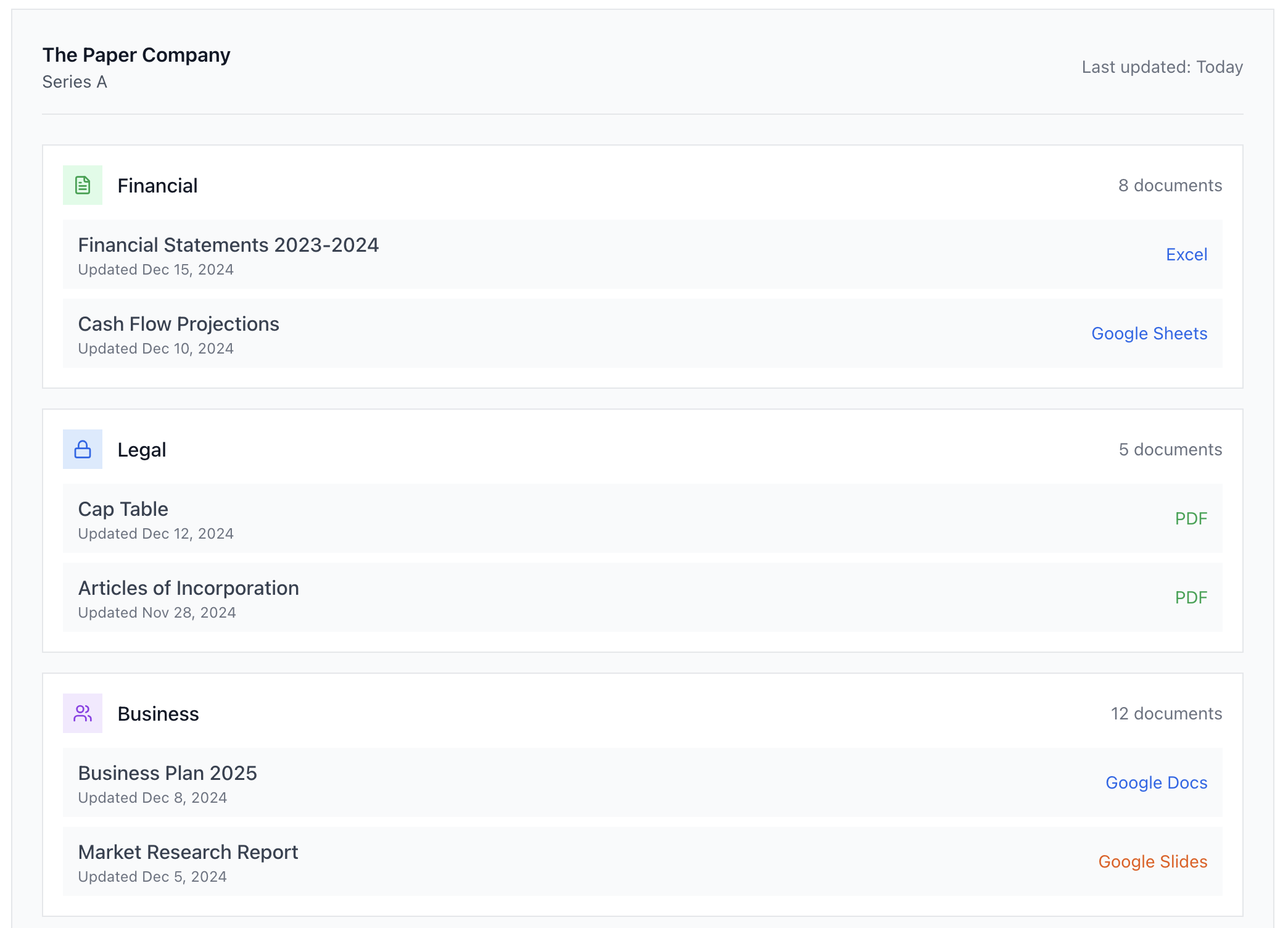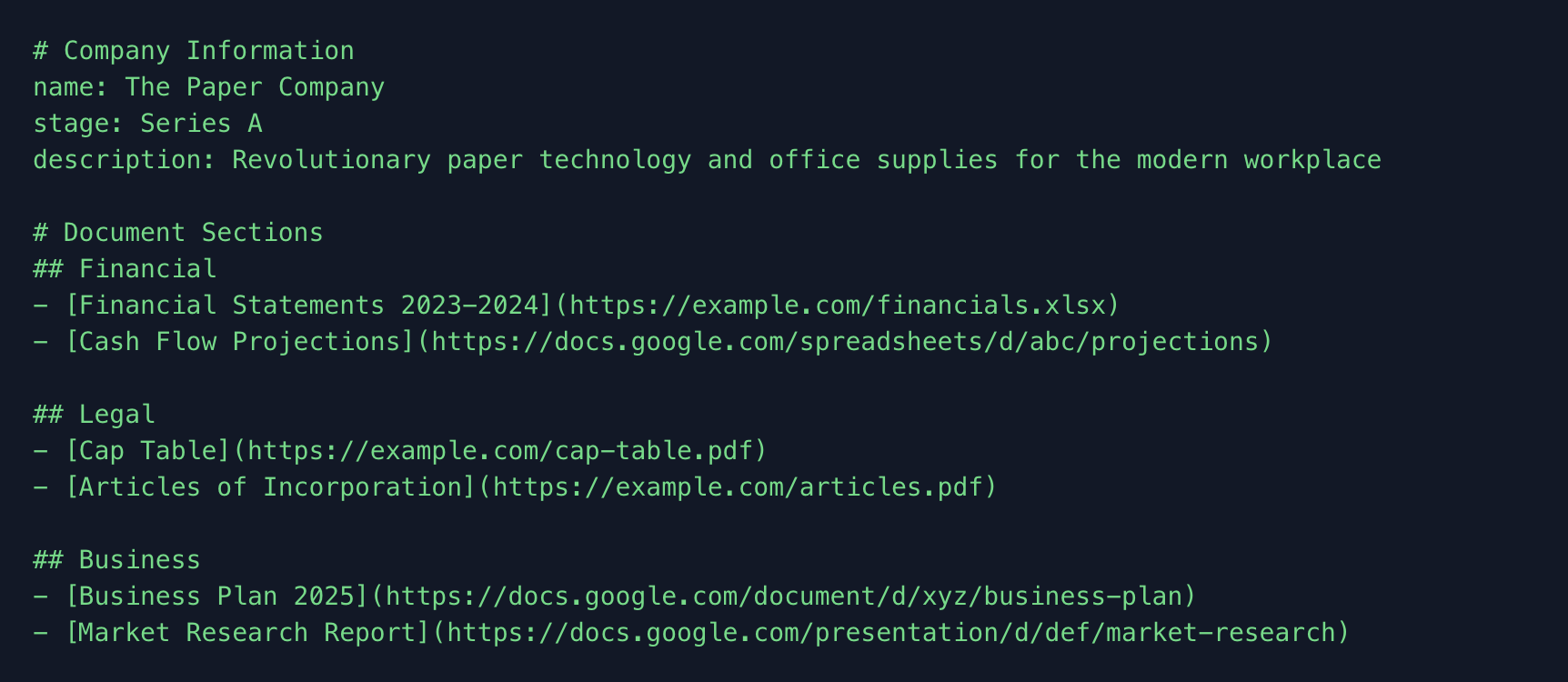Introducing the data room app
Magic link authentication with Replit
20 Jul 2025 The Data Room App (thedataroom.app) provides a clean, intuitive interface for investors to access confidential documents.
The Data Room App (thedataroom.app) provides a clean, intuitive interface for investors to access confidential documents.
In the first part of this series, I shared my experience with vibe coding using Windsurf to build a custom data room application for startups. I discussed why existing data room solutions didn’t meet my needs and also highlighted best practices for working with AI coding assistants.
Now, in the second part, I’ll focus on one of the most critical aspects of any application: secure authentication. Specifically, I’ll walk through implementing magic link authentication with Replit, a passwordless approach that enhances security while providing a seamless user experience for investors accessing confidential documents.
Solving the authentication challenge
I tried initially to implement magic links with Windsurf. Given that auth flows are not my area of expertise, I wasn’t able to fully build a magic link authentication flow and needed more opinionated help. I tried Replit which provided a quick and working solution.
Replit is a browser-based IDE and hosting platform that started in 2016 as a simple code playground but has evolved into a comprehensive development environment. Founded by Amjad Masad, Haya Odeh, and Faris Masad, it’s now focused on making software development more accessible and collaborative. What drew me to it was its ability to handle full-stack applications with built-in authentication systems and serverless deployments, all without requiring complex DevOps knowledge.
Replit vs Windsurf: technical comparison
Authentication and session management
Replit’s integrated authentication blueprints provide pre-configured Passport.js setups, session store integration with PostgreSQL, and automatic HTTPS for secure cookie handling. Magic link authentication was implemented in 15 minutes compared to hours of OAuth configuration debugging.
Database integration
Instant PostgreSQL provisioning through Neon with zero configuration. Connection strings, pooling, and SSL certificates are handled automatically. Drizzle ORM integration works seamlessly with database push deployments without migration file management.
Update (July 2025): Replit has since launched separate development and production databases, a significant enhancement that makes the platform more suited for developing real-world applications. This feature enables safer iteration by isolating development changes from live customer data, with automated migration assistance between environments. This advancement positions Replit as a compelling choice for production applications beyond side projects and prototypes.
Deployment infrastructure
Zero-config deployment to custom domains with automatic HTTPS, environment variable management, and container orchestration. The platform handles load balancing and scaling automatically. Replit eliminated infrastructure bottlenecks including server configuration, database setup, and SSL certificate management.
Replit limitations
Git operations lack the fluidity of native terminal workflows. Even basic branching and commit management feel clunky in the interface. What would be simple git commands in a terminal become multi-step processes with less feedback and control.
The container-based environment limits access to lower-level system functions and file operations, which can make debugging complex issues and performance optimization more challenging compared to local development.
Windsurf trade-offs
Windsurf provides control with traditional Git workflows, full file system access, and familiar terminal operations. However, the setup overhead for authentication, databases, and deployment significantly slows initial development velocity compared to Replit’s integrated infrastructure.
Data room platform implementation
Technical stack
- React frontend with TypeScript and shadcn/ui components
- Express.js backend with PostgreSQL database
- Drizzle ORM for type-safe database operations
- JWT-based authentication with 7-day token expiration
Architecture decisions
- Simple content management: Founders can organize their data room using a simple Markdown file, just like writing documentation. No clunky admin panels.
 Changes to sections.md are reflected instantly - no rebuild required.
Changes to sections.md are reflected instantly - no rebuild required.
-
Flexible document handling: The app supports both direct file uploads (protected by authentication) and links to existing documents in Google Drive or Dropbox.
-
Passwordless authentication: Investors access the data room through magic links sent to their email - no passwords to forget or manage.
-
Role-based access: Different permissions for founders (who pay for the service) and investors (who get free access), with no account creation required for investors.
-
Engagement analytics: Founders can see which documents investors have viewed or downloaded and when, providing valuable feedback on investor interest; without being overly intrusive.
-
Frictionless invitations: Founders can invite investors with a simple email, generating secure access tokens automatically.
Implementation results
The platform is deployed at thedataroom.app and operates in waitlist mode for market validation. The implementation includes PostgreSQL-backed secure sessions, reliable email delivery for magic links and invitations, and robust file security with strict validation and secure storage for documents up to 50MB.
Development timeline
- Week 1: Authentication and data modeling implementation
- Week 2: Document management and UI development
- Week 3: Email system integration and production deployment
Feedback request
If you have past experience with data rooms, I’d love to hear your thoughts on the platform. If you’re going to be needing a data room soon, I’d love to show you what we’ve built and get your feedback.
Live platform: thedataroom.app
Access: Waitlist signups receive discounted pricing; investor access remains free but you would need an invite.